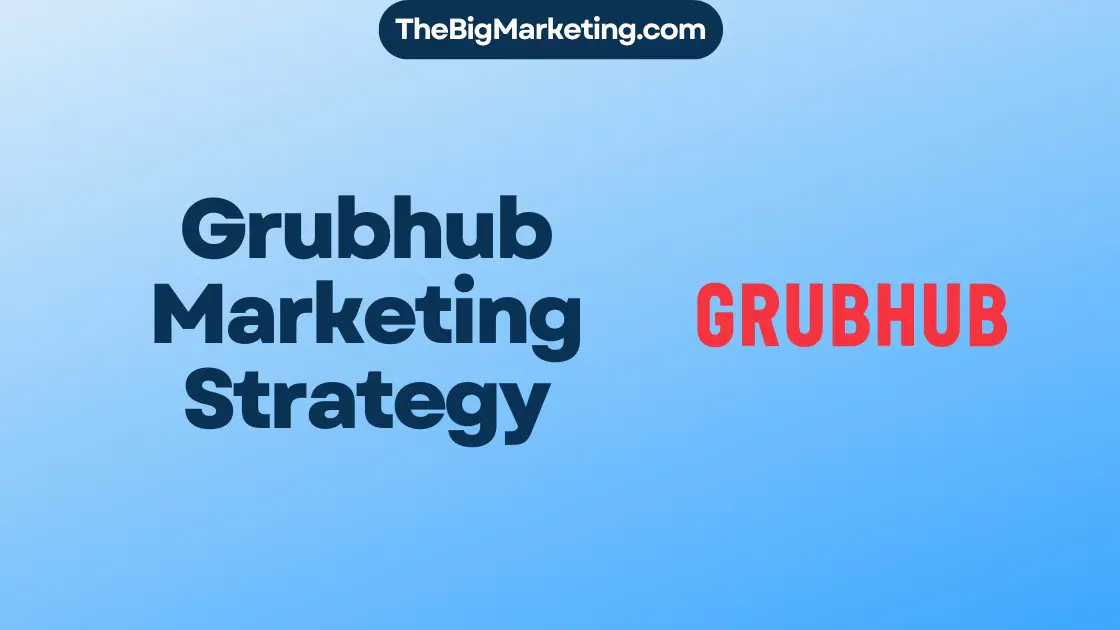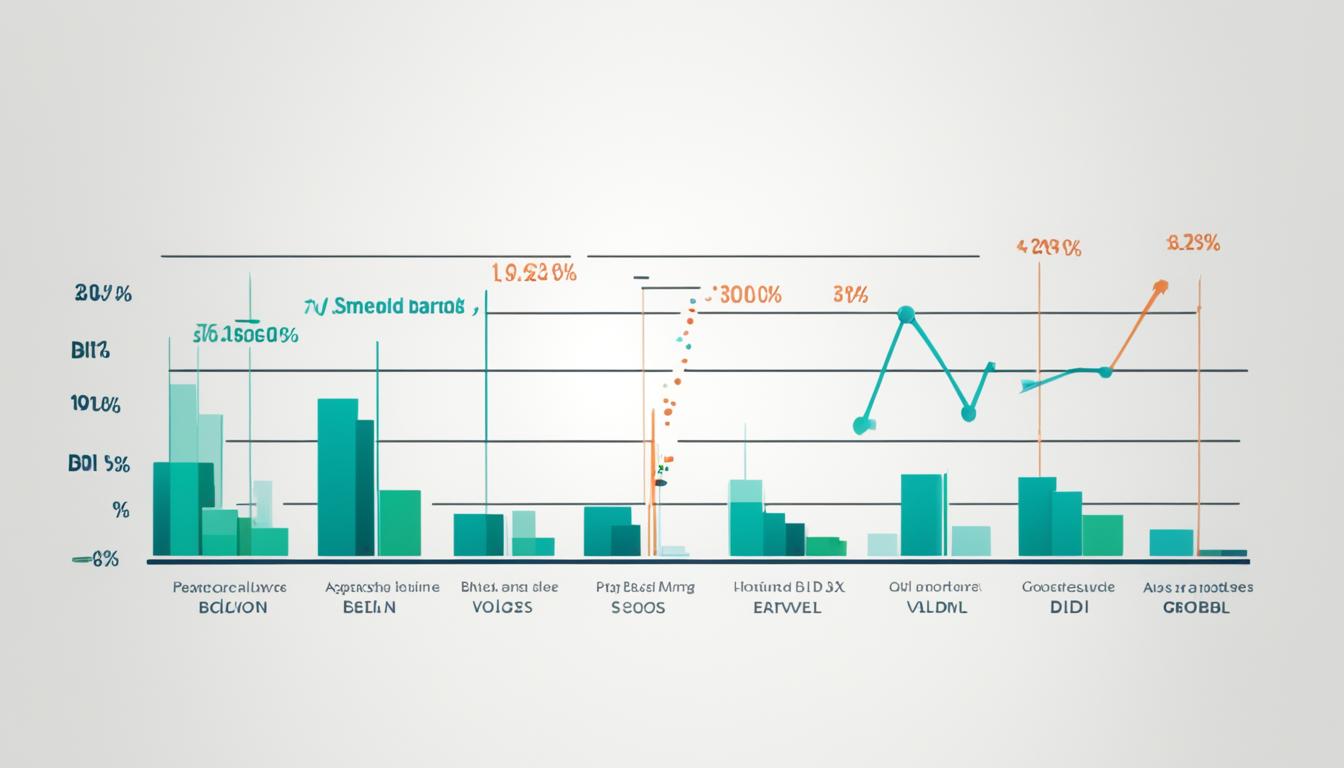In this case study, we’ll dive into the Moz Marketing Strategy for 2024. We’ll see how it boosts online visibility and organic search traffic. This is done by using smart digital marketing and SEO best practices.
The digital world is always changing. To keep up, businesses need to evolve their marketing strategies. Moz, a leading SEO tool provider, has created a strong marketing strategy. It uses the newest digital marketing tactics and SEO rules.
With Moz’s expertise, businesses can shine online. They can climb the ranks in organic searches and pull in more website visitors. This case study will focus on the tactics and strategies Moz uses. We’ll also look at how these tactics help businesses thrive.
Key Takeaways:
- Moz Marketing Strategy in 2024 uses digital marketing and SEO to increase online visibility and organic search traffic.
- Adopting Moz’s strategies can enhance a business’s online presence and attract more targeted website visitors.
- Moz’s know-how helps businesses stay ahead in the constantly evolving digital world.
- A well-integrated digital marketing approach is key to lasting success and growth.
- Regularly updating and improving marketing strategies is essential for staying competitive.
The Value of Case Studies in B2B Marketing
Case studies are key in B2B marketing. They show how a company can achieve great results. They do more than just bring people to a website. They can bring in lots of organic traffic and turn visitors into leads. By sharing stories of successes, case studies help a company stand out and guide potential buyers.
Trust and credibility matter a lot in B2B marketing. Before buying, potential clients want to feel sure about their choice. Case studies offer the proof needed to build that trust. They tell success stories, showing a company’s skills and the benefits of their products or services.
Case studies improve a company’s online presence. When people look for solutions or industry information, they use search engines. Including keywords and useful content in case studies helps a company show up higher in search results. This makes them more visible to their target audience.
Case studies also help pull in the right website visitors. Using SEO in case studies brings in traffic from people looking for answers. This boosts chances for turning these visitors into leads. It also helps build trust, which can lead to lasting relationships.
The Role of Case Studies in Leads Conversion
Case studies are very helpful throughout the sales process. They raise interest in what a company offers. They also help overcome doubts and can lead to converting leads. By sharing detailed stories of projects, they give insights that can encourage potential customers to make a purchase.
They also let businesses show how they solve problems. By presenting a relatable success story, a company can show its skills. This helps the company become seen as a trusted advisor in their field.
Overall, case studies are crucial for B2B marketing. They help a company show their expertise and build trust. Case studies also help attract visitors and engage potential buyers. This can lead to growth and success for the business.
Getting Clients Onboard with Case Studies
Creating impactful case studies can sometimes be hard. Marketers may face high workloads or worry if the results will look good. They might also find it tough to get permission from clients. We will share ways to handle client doubts and show how to effectively share strategies and growth in case studies.
Overcoming Client Objections
It’s common to face objections from clients when making case studies. Some may not want to share their numbers or marketing strategies. To help with this, here are some tips:
- Focus on the value proposition: Talk about the benefits and results clients get from working with you. Avoid stressing on specific numbers or sensitive details.
- Showcase qualitative data: Share testimonials, quotes, and success stories. This adds credibility and shows the impact of your work.
- Obtain permission: Make sure to get clients’ permission to share information. Assure them that their private data will stay safe.
Highlighting Strategies and Growth Percentages
For a compelling case study, showing your strategies and growth is key. This proves the value and effectiveness of your solutions. While presenting this information:
- Focus on key strategy highlights: Explain the unique methods you used to get good results.
- Emphasize growth percentages: Share specific growth numbers to show your success. This provides clear proof of your work.
- Visualize data: Use charts, graphs, or infographics. This makes the growth percentages more interesting and easy to understand.
By properly handling client objections and showing your strategies and growth, you can make powerful case studies. These studies show your skills and build trust with future clients.
| Client Objections | Strategies to Overcome Objections |
|---|---|
| Reluctance to share specific numbers | – Focus on the value proposition |
| Concerns about revealing sensitive information | – Showcase qualitative data |
| Resistance due to confidentiality concerns | – Obtain permission |
Gathering Perspectives for a Comprehensive Case Study
Creating a case study involves talking to both the client and the project team. Getting insights from client and team interviews shows the project from all sides.
Client Interviews
Client interviews are key to seeing their challenges, goals, and the project’s benefits. Asking deep questions brings out useful information. This makes the case study more believable.
These interviews show how the project helped the client’s business. Knowing their view on the outcomes and impact is crucial. It shows how effective the project strategy was.
Project Team Interviews
Insights from the project team are just as important. They give a look at how the strategy was made and what worked or didn’t. This includes how the team worked with the client.
These interviews also share lessons learned from the project. They offer insights into what made the project a success. This helps in planning for future projects.
| Benefits of Client Interviews | Benefits of Project Team Interviews |
|---|---|
| * Uncover client perspective | * Gain insights into strategy formation |
| * Understand challenges faced | * Identify successful projects |
| * Highlight outcomes and benefits | * Discuss unexpected issues |
| * Strengthen case study credibility | * Showcase collaboration with the client |
| * Provide actionable learnings | * Uncover key takeaways |
Talking to both clients and the project team helps create a full picture of the project. It shows how everyone worked together, faced challenges, and celebrated success. These insights are key for future projects and add to the study’s trustworthiness.
The Three Crucial Elements of a Case Study
A great case study has three key parts: the problem, how it was solved, and the victory. Each part has a special role. They grab the reader’s attention, show the value of the case, and spotlight the results.
The Conflict
The conflict introduces the main problem. It grabs the reader’s interest right away. The challenges faced are shown here.
This makes us care about finding a solution. It does so by making us feel for the subject.
The Resolution
The resolution tells us how the problem was tackled. It details the actions taken. It shows the subject’s skills and how they solved the issue.
We see what steps they took. Important techniques or new ideas used are explained.
The Happy Ending
The happy ending shows the good results from solving the problem. It shares improvements or benefits the subject got. This part is clear and quantifiable.
It uses solid evidence to prove success. This makes the case study more convincing and meaningful.
Stories are key to grab and keep the reader’s attention. They make us relate to the subject and root for them. A good case study makes the problem, solution, and success clear. This keeps it memorable and shows its value.
Link Building as an Ongoing, Integrated Activity
Businesses need to change how they see link building. It’s not just a set of campaigns but a constant, integrated activity. The digital world today demands that link building works closely with other marketing areas. It should not stand alone. To thrive, it must be part of the broader marketing strategy.
Link building should be efficient, effective, and sustainable. This way, it becomes a routine activity. High-quality link gathering is ongoing. This approach makes sure link efforts are steady and help the business grow.
An ongoing link strategy provides long-term benefits. It builds a strong online presence and improves search rankings. By gaining quality links regularly, businesses stay competitive. They can adapt to changes in search engines too.
An integrated link strategy also boosts efficiency. It blends with other marketing efforts like content and social media. This combination increases the impact of all strategies. The efforts support and strengthen each other.
Benefits of an Ongoing, Integrated Approach to Link Building:
- Enhanced online visibility and organic search rankings
- Better integration with other marketing disciplines
- Increased credibility and authority in the industry
- Improved website traffic and lead generation
- Long-term sustainable growth and success
Link building should be seen as an endless process. It fuels business growth. High-quality link creation needs time and dedication. However, the outcomes are rewarding and long-term. By weaving link building with the overall marketing strategy, businesses can achieve sustainable growth.
| Comparison of Campaign-Based Link Building vs. Ongoing, Integrated Link Building | Campaign-Based Link Building | Ongoing, Integrated Link Building |
|---|---|---|
| Approach | One-off campaigns with specific start and end points | Continuous and seamless integration with marketing efforts |
| Impact | Limited duration and temporary results | Long-lasting impact and sustained growth |
| Integration | Operates independently from other marketing activities | Tightly integrated with other marketing disciplines |
| Consistency | Results may vary across different campaigns | Consistent and predictable link acquisition |
The Problem with Campaign-Based Link Building
Campaign-based link building can help get backlinks and increase website visibility. But, it has limits when used alone. It’s vital to see link building as a continuous activity.
The Temporary Nature of Link Building Campaigns
Link building campaigns are not ongoing. They start and end, making them temporary. Although they can quickly bring many backlinks, the results may not last. After a campaign ends, backlinks might be lost, lowering organic rankings.
Lack of Integration with Other Marketing Activities
Often, link building campaigns are separate from other marketing efforts. This separation can lead to missed chances for cross-promotion and content marketing. Businesses need a unified digital marketing approach, rather than separate campaigns.
Challenges in Achieving Consistent Results
Finding new opportunities and creating unique content consistently can be tough. This is especially true for businesses with few resources. Campaign-based link building may struggle to bring in quality backlinks steadily.
To address these limits, companies should look at link building as an ongoing effort. This approach can align link building with other marketing strategies, ensuring long-term success.
A Comparison Between Campaign-Based and Integrated Link Building
| Aspects | Campaign-Based Link Building | Integrated Link Building |
|---|---|---|
| Duration | Short-term | Long-term |
| Integration with Other Marketing Activities | Limited | Seamless |
| Consistency of Results | Varies | Reliable |
| Efficiency | Requires continuous creation of new campaigns | Streamlined, ongoing efforts |
| Impact on Organic Search Rankings | Temporary boost | Sustained improvement |
This table shows the benefits of ongoing, integrated link building over short campaigns. It points to long-lasting results, better integration, reliable outcomes, more efficiency, and better rankings.
Driving Sustainable Behaviors with Link Building
For long-term link building success, it’s vital for businesses to promote sustainable practices. This means blending link building with other business areas, making it part of the overall digital plan, and constantly achieving good results. We see link building as a regular business activity, adapt internal processes for it, boost the team’s eagerness to learn about it, and aim for steady outcomes. This way, companies can greatly enhance their link building effectiveness.
Link Building as a Business-as-Usual Activity
Link building should never be a one-time project or a task that’s quickly done then dropped. Rather, companies need to see it as an ongoing part of their operations. This mindset ensures link building gets the focus and resources needed. A more consistent and enduring approach to link building strategies becomes possible with this method.
Shaping Internal Processes for Link Building
For successful link building, companies must develop and apply internal processes. These need to support link building efforts and guarantee smooth operations. It might mean setting up rules and procedures for obtaining and handling backlinks. Clear processes help companies organize their link building work and work more efficiently.
Fostering a Desire for Link Building Knowledge
Keeping the team motivated is crucial for lasting link building success. To get the team involved in link building, companies should spark interest in learning more about it. This can be done by offering learning resources, training, and skill-building opportunities. By equipping the team with knowledge and confidence, companies are setting the stage for more active and successful link building.
Consistently Delivering Results
For link building to have a long-term impact, consistency in outcomes is key. Companies need to aim for steady results, like getting quality backlinks and boosting online presence. This involves setting realistic targets, tracking progress, and fine-tuning strategies based on results. By regularly achieving their goals, companies earn trust and credibility, crucial for forming solid web relationships and attracting organic backlinks.
| Benefits of Driving Sustainable Behaviors with Link Building |
|---|
| 1. Improved search engine rankings |
| 2. Increased organic traffic |
| 3. Enhanced online visibility |
| 4. Stronger brand reputation |
| 5. Higher conversion rates |
| 6. Increased authority and credibility in the industry |
Link Building as a Business-as-Usual Activity
Link building has grown a lot recently. Now, it’s an ongoing part of a company’s digital plan. This new way of thinking has many benefits for a business.
Regular link building makes a strong and lasting link profile. It boosts a business’s online spot and search ranking. Seeing link building as a piece of the bigger marketing plan is key.
Link building works best when combined with other business goals. It should line up with making content, using social media, and working with influencers. This way, every effort boosts the others, leading to better results.
Besides, making link building a normal part of business has long-term plus points. It creates strong connections with key people and sites. These relationships can open doors for working together and sharing content. A consistent focus on link building keeps a business ready to improve and adapt.
Also, regular link building helps a business’s bottom line. Getting good links regularly ups a brand’s visibility, brings more web visitors, and increases sales. This way, link building offers real benefits and helps a business grow and profit.
Benefits of Link Building as a Business-as-Usual Activity:
- Improved search engine rankings and online visibility
- Sustainable and efficient link profile
- Integration with other marketing activities
- Strengthened relationships with industry influencers and relevant websites
- Long-term opportunities for collaboration and co-marketing
- Increase in organic traffic and conversion rates
By making link building a routine practice and part of their digital strategy, businesses can fully use their online presence. This brings big benefits from a thorough link building approach.
An Example of Evolving Link Building Strategies
This section presents a real-life case study. It shows how to move from campaign-based link building to a continuous strategy. This example underscores the merits of sustainable link building, ongoing activities, scalable campaigns, and stable outcomes.
Case Study: Company X
Company X, a top e-commerce brand, saw the drawbacks of just using campaign-based link building. They knew they needed ongoing, scalable strategies for long-lasting success. To do this, Company X changed their link building strategy to focus on sustainability.
They first saw the importance of continuous activities over one-off campaigns. They realized that regularly making connections and getting quality backlinks are key for long-term benefits. Through steady outreach, working with influencers, and offering valuable content, Company X kept their link profile growing.
Scalability was also vital for Company X. They shifted from short-term campaigns to a broad link building plan that could grow. This strategy let them use resources well, reach different audiences, and consistently get links for their whole site.
With a focus on sustainable, ongoing link building, Company X saw impressive gains. They enjoyed more visibility in searches, better organic traffic, and higher rankings in search engines.
The approach also helped their overall business. It boosted brand awareness, more customer interaction, and higher conversions.
Company X’s story shows the benefits of sustainable link building and continuous action. By choosing long-term strategies over short campaigns, they saw scalable and steady success. This added great value to their business in the long run.
| Benefits of Evolving Link Building Strategies |
|---|
| Consistently generating high-quality backlinks |
| Improving organic search visibility |
| Increase in organic traffic |
| Boost in search engine rankings |
| Enhanced brand awareness |
| Improved customer engagement |
| Higher conversion rates |
Conclusion
In 2024, the Moz Marketing Strategy shows how digital marketing and SEO can boost online visibility and traffic. Businesses are encouraged to keep up with link building as part of their marketing. This helps them grow and maintain their impact online.
This article shares a case study proving the power of these methods. Using the Moz Marketing Strategy helps companies improve their online look, reach the right people, and increase sales and revenue.
It’s important for companies to stay updated with digital marketing and SEO trends. By doing so, they can keep refining their strategies. Focusing on sustainable link building and valuable content ensures long-term success and a solid online presence.








